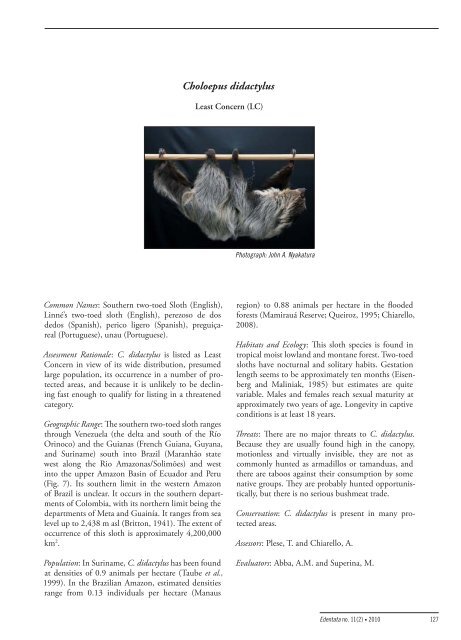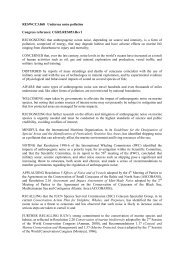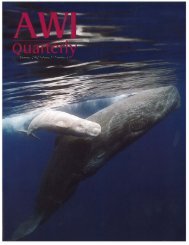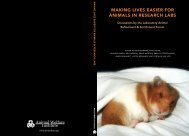EMERGENCY PETITION TO LIST THE PYGMY THREE-TOED SLOTH
EMERGENCY PETITION TO LIST THE PYGMY THREE-TOED SLOTH
EMERGENCY PETITION TO LIST THE PYGMY THREE-TOED SLOTH
Create successful ePaper yourself
Turn your PDF publications into a flip-book with our unique Google optimized e-Paper software.
Choloepus didactylusLeast Concern (LC)Photograph: John A. NyakaturaCommon Names: Southern two-toed Sloth (English),Linné’s two-toed sloth (English), perezoso de dosdedos (Spanish), perico ligero (Spanish), preguiçareal(Portuguese), unau (Portuguese).Assessment Rationale: C. didactylus is listed as LeastConcern in view of its wide distribution, presumedlarge population, its occurrence in a number of protectedareas, and because it is unlikely to be decliningfast enough to qualify for listing in a threatenedcategory.Geographic Range: The southern two-toed sloth rangesthrough Venezuela (the delta and south of the RíoOrinoco) and the Guianas (French Guiana, Guyana,and Suriname) south into Brazil (Maranhão statewest along the Rio Amazonas/Solimões) and westinto the upper Amazon Basin of Ecuador and Peru(Fig. 7). Its southern limit in the western Amazonof Brazil is unclear. It occurs in the southern departmentsof Colombia, with its northern limit being thedepartments of Meta and Guainía. It ranges from sealevel up to 2,438 m asl (Britton, 1941). The extent ofoccurrence of this sloth is approximately 4,200,000km 2 .Population: In Suriname, C. didactylus has been foundat densities of 0.9 animals per hectare (Taube et al.,1999). In the Brazilian Amazon, estimated densitiesrange from 0.13 individuals per hectare (Manausregion) to 0.88 animals per hectare in the floodedforests (Mamirauá Reserve; Queiroz, 1995; Chiarello,2008).Habitats and Ecology: This sloth species is found intropical moist lowland and montane forest. Two-toedsloths have nocturnal and solitary habits. Gestationlength seems to be approximately ten months (Eisenbergand Maliniak, 1985) but estimates are quitevariable. Males and females reach sexual maturity atapproximately two years of age. Longevity in captiveconditions is at least 18 years.Threats: There are no major threats to C. didactylus.Because they are usually found high in the canopy,motionless and virtually invisible, they are not ascommonly hunted as armadillos or tamanduas, andthere are taboos against their consumption by somenative groups. They are probably hunted opportunistically,but there is no serious bushmeat trade.Conservation: C. didactylus is present in many protectedareas.Assessors: Plese, T. and Chiarello, A.Evaluators: Abba, A.M. and Superina, M.Edentata no. 11(2) 2010 127
















